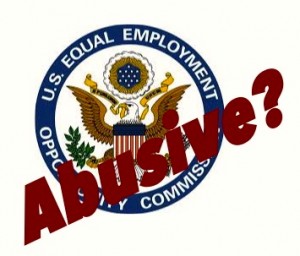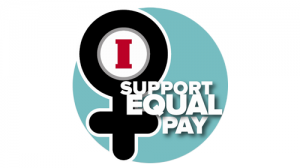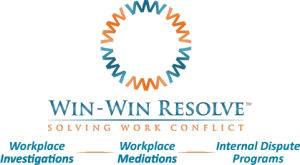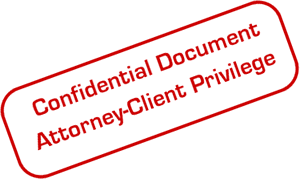 After acknowledging in recent testimony before the United States House of Representatives Committee on Education and the Workforce Subcommittee on Workforce Protections that “[c]ombating discrimination in the workplace is a worthy goal and one that the U.S. Chamber of Commerce supports,” the Chamber went on to call the EEOC’s enforcement tactics “abusive.”
After acknowledging in recent testimony before the United States House of Representatives Committee on Education and the Workforce Subcommittee on Workforce Protections that “[c]ombating discrimination in the workplace is a worthy goal and one that the U.S. Chamber of Commerce supports,” the Chamber went on to call the EEOC’s enforcement tactics “abusive.”
The Chamber also accused the EEOC under the Obama Administration of having “misplaced priorities and overzealous litigation tactics.” The Chamber concluded its 17 pages of testimony by calling on the “EEOC to adopt institutional procedures to provide for internal accountability, more efficient use of resources and adherence to its own statutory conciliation and other obligations.” If the EEOC fails to do so, the Chamber “encourage[d] Congress to use its oversight authority to install much needed safeguards within the EEOC.”
The Chamber’s testimony was delivered by Camille A. Olson, a partner of Seyfarth Shaw LLP, Co-Chair of its National Complex Litigation Practice Group, and National Chairperson of its Complex Discrimination Litigation Practice Group.
The Chamber’s testimony highlighted three areas of concern: EEOC Investigations, EEOC Conciliations and EEOC Private Party and Amicus Litigation.
EEOC’s Investigations Called “Dilatory, Inconsistent and of Questionable Quality”
Under applicable law, the EEOC has a statutory obligation to “make its determination on reasonable cause as promptly as possible and, so far as practicable, not later than one hundred and twenty days from the filing of the charge.” In its testimony, the Chamber said the EEOC is failing to meet this obligation and criticized the EEOC’s investigations as being “dilatory, inconsistent and of questionable quality.”
The Chamber also stated that plaintiff and management attorneys and courts hare its concerns. In support of this statement, the Chamber cited the meeting transcripts from public hearings held by the EEOC, including the public hearing in which I submitted testimony and participated.
Based on my informal discussions with employers and their counsel across the country, I concur that the EEOC’s investigations are of uneven quality. It is for this reason that in my 2013 EEOC testimony, I urged the EEOC to review and standardize its investigation process and to reinvigorate its training program for investigators.
EEOC’s Statutory Obligation to Conciliate Should be Subject to Judicial Review
Under applicable law, the EEOC has a statutory obligation to “endeavor to eliminate any… unlawful employment practice by informal methods of conference, conciliation, and persuasion.” The Chamber view this obligation as “serve[ing] all sides – employees, employers and courts” and states that “needless, expensive, protracted litigation should be avoided if compliance can be obtained through informal means.”
In its testimony, the Chamber highlights a number of cases in which courts have found that the EEOC did not meet its statutory obligation to use informal conference, conciliation and persuasion prior to commencing litigation. It also points out, however, that there is a split among the circuits as to what exactly is required under the statute. Hopefully, the U.S. Supreme Court will grant the petition for writ of certiorari currently pending before the United States Supreme Court in Mach Mining v. Equal Employment Opportunity Commission and directly address the issue of whether and to what extent a court may enforce the Equal Employment Opportunity Commission’s mandatory duty to conciliate discrimination claims before filing suit.
I agree with the Chamber that the EEOC does not appear consistently across the country to exhaust informal methods of conference, conciliation and persuasion before it files a lawsuit against an employer. In fact, it is for this reason that in my 2013 EEOC testimony I urged the EEOC to
-
implement a pilot program incorporating a structured ADR process into the EEOC’s post-cause conciliation process;
-
consider promptly the use of ADR methodologies beyond mediation and arbitration, and to consider early case assessment, med-arb, and other hybrid processes prior to tendering a Right to Sue Notice; and
-
set a time line within the Quality Control Plan for implementing a pilot program incorporating a structured ADR process into the post-cause conciliation process.
Chamber Cites $5.6+ Million in Sanctions in Support of Proposed Requirement that Commissioners Approve Any Multi-Plaintiff Litigation
According to the Chamber, in “the last two years, the EEOC has been ordered to pay employers over $5.6 million dollars as a result of its improper litigation and conciliation efforts.” It says the EEOC has been sanction for its: “failure to follow appropriate procedures before instituting litigation, failure to appropriately litigate the case, and failure to reasonably assess the appropriateness of continuing its litigation once it became clear in discovery that its complaint’s theory had no basis in fact.”
As the Chamber rightly points out, these $5.6+ million in sanctions are in addition to the significant internal costs associated with these same lost cases. These internal costs include tax payer dollars used to pay the EEOC attorneys and staff who worked on these cases plus the tax dollars used to pay the expert witnesses in the cases.
The Chamber proposes that the EEOC mitigate the risks of such future sanctions and waste of EEOC resources (i.e. tax dollars) by returning to the litigation approval process that was in place prior to 1995. This change would require that the bipartisan EEOC Commission comprised of five presidentially appointed members approve all multi-plaintiff litigation.














